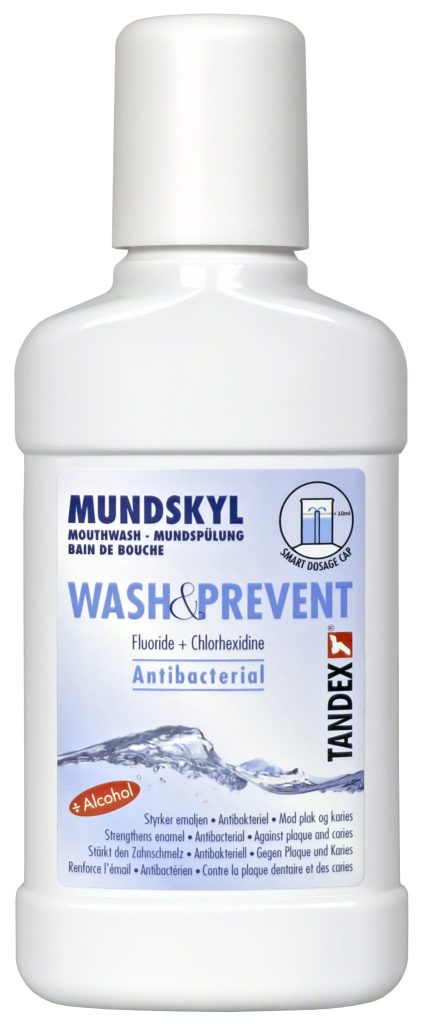The most important element for implant success? An understanding patient!
Featured Products Promotional FeaturesPosted by: Dental Design 29th September 2022

The Adult Dental Health Survey, taken in 2009 (published 2011), called implants “increasingly mainstream”.[i]Over a decade on, this area of dentistry has gone from strength to strength, thanks to digital technologies and biocompatible materials, giving millions of people worldwide a highly desirable alternative to a removable prosthesis. Aesthetically, dental implants can look naturally beautiful, too.
This is a treatment that requires investment, though. Not just financial also, an ongoing commitment to achieving and maintaining a successful result that will last for years to come. The team supporting the planning and delivery of implant therapy will include a number of practitioners, general and specialist. From the general/referring dentist to the dentist placing the implants , the dental hygienist and/or therapist, practice manager, front-desk staff… the list can and will go on, depending on the complexity of the case, and everyone has their part to play. Among the most crucial elements, though, is the patient, their oral and general health-related practises and behaviours, also their willingness to comply with advice and instructions.
Good communication between the patient and the team must begin pre-treatment, to optimise success. For example, the patient should be fit and well, a non-smoker as well as having optimal oral health. If this is not the case, positive communication to manage expectations will enable them to understand why they will need to improve their oral health status before implant therapy can start.
 Expect people to be doing independent research, as part of the decision-making process. The quality of some information online and social media can be a source of frustration for healthcare professionals, but the positive side to this is empowered and proactive patients. What you learn during open and frank discussions will enrich every area of your practice, as well as their experience. If they have read about implant failure, for example, you can talk about how they are neither a “place and go” solution, nor come with a lifetime guarantee. If they ask you about peri-implantitis – which has been described as a “ticking time bomb” – this is an opportunity to explain what we do know about this disease, which can affect the hard and soft tissue around an implant, compromising its stability. [ii] Peri-implantitis is a challenge for the profession, not least because figures for its true burden vary.[iii] With more long-term studies needed, research has found that factors that predispose an individual to peri-implantitis include periodontal disease, cigarette and smokeless tobacco use, hyperglycaemia and obesity.[iv] An association between genetics and specific risks for peri-implantitis has also been offered; other studies have stated this relationship cannot be “conclusively determined”.[v] As for other, local factors, these include excess cement and a poorly designed/fitting prosthesis. Also, peri-implant mucositis, a plaque-induced inflammatory condition, which presents similar to periodontitis on natural teeth. This can, and should be detected at a routine appointment, and reversed before it progresses to peri-implantitis.
Expect people to be doing independent research, as part of the decision-making process. The quality of some information online and social media can be a source of frustration for healthcare professionals, but the positive side to this is empowered and proactive patients. What you learn during open and frank discussions will enrich every area of your practice, as well as their experience. If they have read about implant failure, for example, you can talk about how they are neither a “place and go” solution, nor come with a lifetime guarantee. If they ask you about peri-implantitis – which has been described as a “ticking time bomb” – this is an opportunity to explain what we do know about this disease, which can affect the hard and soft tissue around an implant, compromising its stability. [ii] Peri-implantitis is a challenge for the profession, not least because figures for its true burden vary.[iii] With more long-term studies needed, research has found that factors that predispose an individual to peri-implantitis include periodontal disease, cigarette and smokeless tobacco use, hyperglycaemia and obesity.[iv] An association between genetics and specific risks for peri-implantitis has also been offered; other studies have stated this relationship cannot be “conclusively determined”.[v] As for other, local factors, these include excess cement and a poorly designed/fitting prosthesis. Also, peri-implant mucositis, a plaque-induced inflammatory condition, which presents similar to periodontitis on natural teeth. This can, and should be detected at a routine appointment, and reversed before it progresses to peri-implantitis.
The most important point for implant patients is to understand how regular visits to the dentist alongside meticulous homecare is the most fundamental thing they can do, to give their investment the best chance of enduring. There is a wider acceptance and understanding about the value of prevention, and that elevated, optimised preventive care means more than a brisk once-over with a toothbrush twice a day. Optimising prevention is particularly crucial for implant patients. Correct brushing technique should be reviewed before and after the placement of an implant; show as well as tell people how to clean comprehensively. Recommending a homecare kit compromised of an everyday brush that is comfortable to hold and use around the implant site, plus a tool for interdental cleaning and other adjuncts that will not only improve oral hygiene before an implant is placed, but keep the mouth hygienically clean afterwards, to promote healing. TANDEX is a premium brand that produces high-quality products to prevent oral disease and support long-term health, including brushes and interdental tools – available in UltraSoft variants – also mouthwashes and GEL, to be applied following your instruction.
Implant therapy has become the gold standard for restoring damaged or missing teeth, in function and aesthetics. In another 10 years’ time, given the speed of advancement, who knows what we will be able to achieve in this fast-developing field! Although more research is needed into peri-implantitis, as well as other factors that can compromise stability, what is key is that your patients understand the role they have to play in their implant’s success. For now, good communication and relationships, leading to trust and a willingness to work as part of the implant team, will help more patients enjoy the many benefits of this lifechanging treatment.
For more information on Tandex’s range of products,
visit https://tandex.dk/ or visit the Facebook page: https://www.facebook.com/TandexUK
Our products are also available from CTS Dental Supplies https://www.cts-dental.com/ and DHB Oral Healthcare https://dhb.co.uk/
Author Kimberley Lloyd- Rees on behalf of Tandex
Kimberley graduated from the University of Sheffield in 2010, where she now works as a clinical tutor in Dental Hygiene and Therapy as well as working in practice. She has spent her career working across a variety of specialist private and mixed dental practices, for the MOD and volunteering her time to a dental charity in Nepal.
[i] The Health and Social Care Information Centre. Executive Summary: Adult Dental Health Survey 2009. Section 4: Complexity and Maintenance. Link: https://files.digital.nhs.uk/publicationimport/pub01xxx/pub01086/adul-dent-heal-surv-summ-them-the4-2009-rep6.pdf (accessed June 2022).
[ii] A ticking time bomb? MDDUS, 6 January 2015. Link: https://www.mddus.com/resources/publications-library/insight/winter-2015/a-ticking-dental-time-bomb (accessed June 2022).
[iii] Klinge B, Klinge A, Bertl K, Stavropoulos A. Peri‐implant diseases. European Journal of Oral Sciences. 2018 Oct; 126: 88-94.
[iv] Hashim, D., Cionca, N. A Comprehensive Review of Peri-implantitis Risk Factors. Curr Oral Health Rep 7, 262–273 (2020). https://doi.org/10.1007/s40496-020-00274-2
[v] Curr Oral Health Rep 7, 262–273 (2020).








